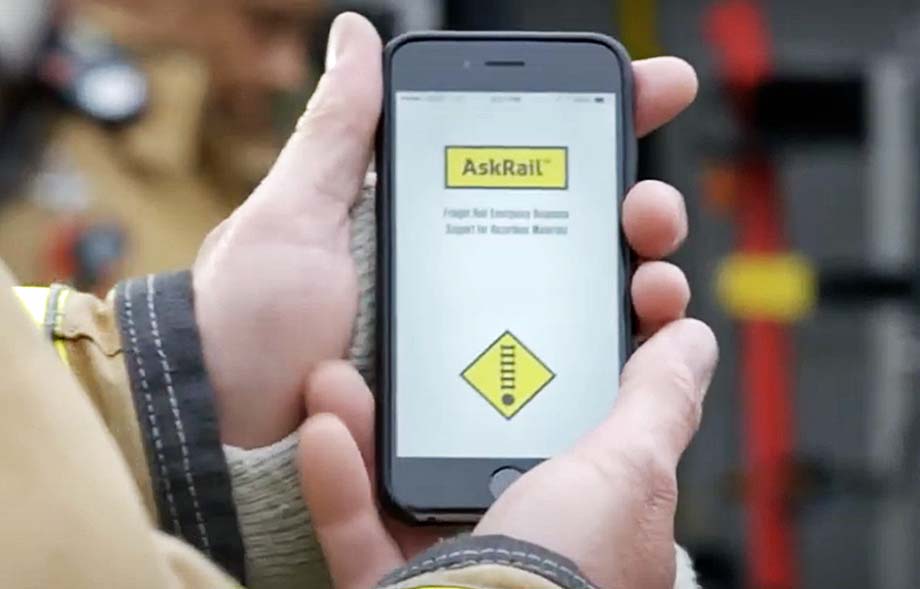
New York New York USA
North America - Launched in 2014, AskRail® is a collaborative effort among the emergency
response community and all seven Class I railroads (BNSF, CP, CN, CSX, KCS, NS, and UP).
It provides more than 35,000 first responders, from all 50 states and eight Canadian provinces, "with immediate
access to accurate, timely, data about what type of hazardous materials a rail car is carrying so they can make
informed decisions on how to best respond to a rail incident," according to Railinc, the app developer and a
wholly owned subsidiary of the Association of American Railroads (AAR).
The addition of specific coordinates for railroad milepost and grade crossing locations was requested by first
responders participating in meetings with the railroads and Railinc.
"With this information, emergency response crews can immediately determine where to set up parameters for an
isolation zone around the incident site, and to assess if alerts or evacuation orders should be issued to any affected
communities," Railinc reported.
Available in English and French in the United States, Canada, and Mexico, the app also includes mapping, among other
features, to provide isolation zone and points of interest (street or satellite view).
"These new features will provide first responders with the specific data they have requested as part of our
ongoing dialogue with these key safety stakeholders," Railinc President Allen West said.
"Railinc has supported AskRail since its inception in 2014. I am proud of the efficient and enthusiastic work by
the Railinc development team that leveraged our comprehensive North America railroad database for the benefit of
industry employees, users, and the communities they serve."
Only qualified emergency responders who have completed rail emergency training sponsored by one of the Class I's or at
the Security and Emergency Response Training Center (SERTC) can download for free and use the restricted features in
the AskRail app.
Railroads can also offer the app to known emergency responders along their routes.
Author unknown.
(likely no image with original article)
(usually because it's been seen before)
provisions in Section 29 of the
Canadian Copyright Modernization Act.

